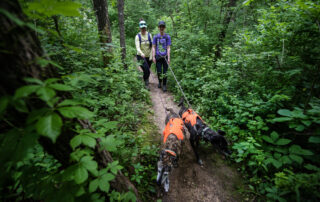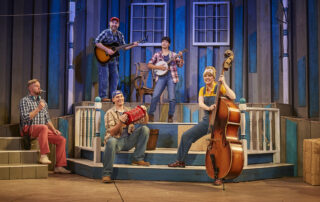Not everyone finds their life’s passion as a child. But Bob Stark did. There’s even a photo of it happening. That’s when 11-year-old Stark took the wheel of a family friend’s boat on Lake Winnebago. “That’s when it bit, and it’s been there ever since.”
Soon Stark’s view went beyond the shores of Lake Winnebago. “I used to see these boats out on the water, and they were tug boats and barges. Come to find out that these tugs and barges were hauling coal in to Oshkosh from Green Bay. And ultimately I found out that because of the connection with the St. Lawrence Seaway, you can go anywhere in the world from the Great Lakes. You can go anywhere in the world from the spot that I was standing in Oshkosh, and that just totally fascinated me.”
The key was the Fox River Locks, a series of 17 bays where boats could enter at one water level, and exit at another; up or down, depending if you’re heading upstream to Lake Winnebago or downstream to Green Bay. “The waterdrops 170 feet going through the Lower Fox River from when it leaves Lake Winnebago until it enters the Bay of Green Bay. That’s about the height of Niagara Falls if you put that into perspective,” says Stark.
What’s even more amazing is the locks don’t rely on big pumps and motors. They are all operated by hand, and with a simple understanding of physics. When a boat enters the lock, the doors are closed and a series of valves opened to allow the water to drain down to the level of the next segment of the river. Then the next set of doors are opened and the boats can go. To go upstream, just reverse the process: water from upstream fills the lock to the proper level. Gravity makes the water pressure pushing on the doors so strong it’s impossible to open them until the water level and pressure on both sides is equal.
The locks were built in the 1850s. “Wisconsin became a state in 1848, and the construction on the lock system was actually the first public works project for the state of Wisconsin,” says Stark.
At the time, water was the main highway to get goods in and out of the Fox Valley. The original logbooks show a lot of coal coming in and paper products heading out. Eventually the railroads and interstate system made commercial shipping on the Fox River obsolete. “The last trip, I want to say, was I think officially in 1988,” says Stark.
Federal funding for maintenance dried up and the locks fell into disrepair and were closed. “Ultimately the whole system was destined to be filled in. In some instances literally torn out and it just simply would have gone away,” says Stark. “I found out about this group that was trying to preserve it. I got involved with them.”
The group became the Fox River Navigational System Authority. Stark became chairman, and then CEO. “The more that I got into it, the more personal it became.”
Bob knew firsthand the impact the locks had on his life and his children. “It’s been part of my fabric ever since I was a small kid. I didn’t know I was learning physics, I didn’t know I was learning history. That’s why I got involved and why I have the passion to do what I do. This needs to be preserved for everybody so that other people can experience that as well.”
It took 10 years and $15 million, but the locks are open and busy. “You go to a museum and you stand on this side of the rope. Here you are in this living museum and you’re actually using it and you’re helping to preserve it.”
It’s been a long time since Bob Stark’s first trip through the locks, but it never gets old. “It’s a thrill. It’s amazing to me that you can do that. You can’t get there from there unless you do that, right? This is the last lock going downriver. You can see the mouth of the bay down there. There’s the world out there.”
His Daughter’s Curiosity
Bob Starks explains the impact traveling through the locks as a child had on his daughter.







